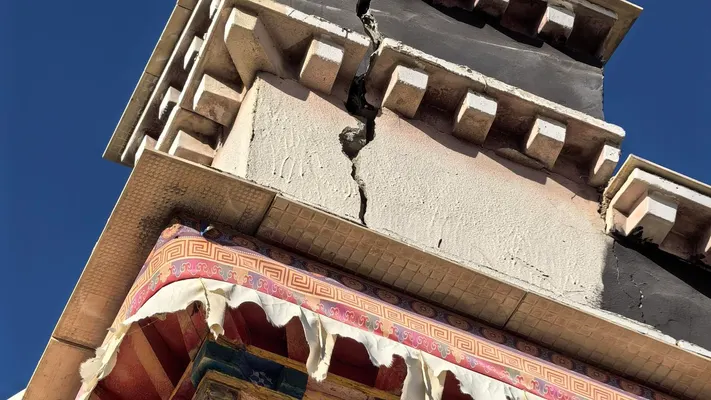
On January 9, 2025, a powerful earthquake struck Tibet, causing significant destruction and loss of life. This blog provides an overview of the earthquake.
Overview of the Tibet Earthquake
The earthquake, which registered a magnitude of 6.8, had its epicentre in Tingri. It located approximately 50 miles north of Mount Everest. This region is famous for its seismic activity due to the collision of the Indian and Eurasian tectonic plates. The tremor was felt not only in Tibet but also in neighbouring countries, including Nepal, Bhutan, and India.

Casualties and Damage
As of the latest reports, at least 126 people have been confirmed dead, with 188 others injured on the Tibetan side. The earthquake caused extensive damage, destroying over 3,600 homes in the Shigatse region, which is home to around 800,000 residents. The harsh winter conditions, with temperatures dropping as low as -16°C (3°F), have compounded the challenges faced by those affected, particularly those trapped under rubble or without shelter.
Rescue Operations
Rescue efforts have been underway since the earthquake struck. More than 14,000 rescue personnel have been deployed to the affected areas, and over 400 individuals have been rescued from the debris. The Chinese government has mobilized resources, including the air force and drones, to assist in the search and rescue operations. However, the ongoing aftershocks—over 646 recorded—pose additional risks to both rescuers and survivors.

International Response
The international community has expressed condolences and offered assistance. Leaders from various countries, including Russian President Vladimir Putin and Taiwan President Lai Ching-te, have reached out to express their sympathies to the victims and their families. The situation remains fluid, and further updates on international aid efforts are the rescue operations continue.

Conclusion
The recent earthquake in Tibet has resulted in a tragic loss of life and significant destruction. As rescue efforts progress, the focus remains on providing aid to those affected and ensuring their safety in the face of ongoing aftershocks and harsh winter conditions. The international community’s response will be crucial in the coming days as the region begins to recover from this disaster.
Read more on Lifetips.blog














